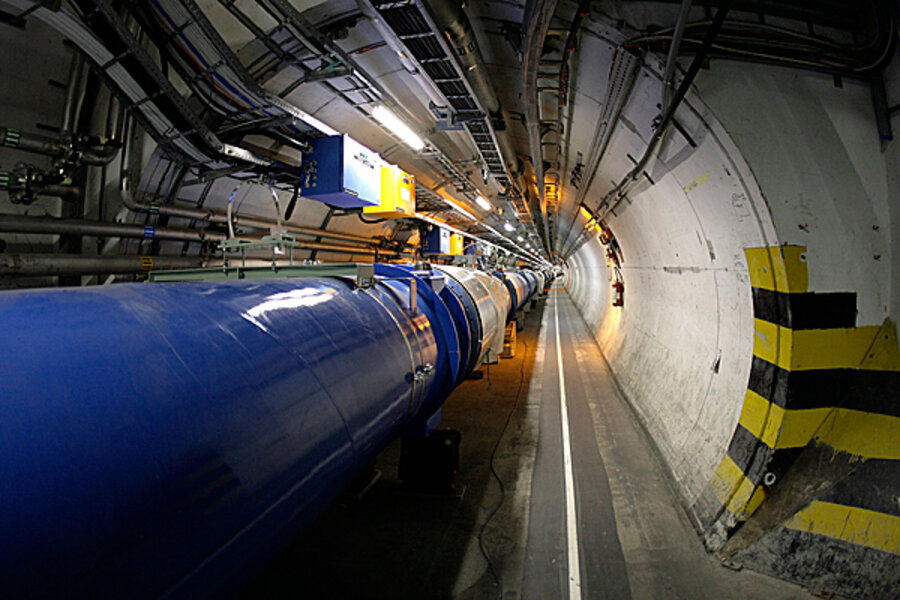Eureka! Large Hadron Collider fires up, smashes protons
Loading...
Scientists have opened what promises to be a new window on the universe, and on the matter and energy it contains, with Tuesday's record-breaking particle collisions at the European Organization for Nuclear Research in Geneva.
At 7:06 a.m. EDT, detectors at the lab's Large Hadron Collider (LHC) recorded the accelerator's first proton-on-proton collisions at energy levels roughly 3.5 times higher than those in previous experiments.
The event marks the beginning of what researchers expect to be a historic 18- to 24-month science run. After that, scientists will attempt to drive the accelerator closer to its full design energy of 14 trillion electron volts. That energy level corresponds to energies present when the universe was only one ten-billionth of a second old.
IN PICTURES: The Large Hadron Collider
Hopes are high that the new proton-smashing tool can lead to breakthroughs in scientists' understanding of basic physics.
"The last revolution in physics happened about 100 years ago, at the end of the 19th century," explains Jurgen Schukraft, a physicist and spokesman for an experiment dubbed ALICE, one of four major experiments along the underground accelerator's 27-kilometer (17-mile) circumference.
Scientists had a standard model of how the world worked, "but there was some data that did not fit," he says. The outcome of attempts to resolve the problems: general relativity and quantum mechanics, two pillars of modern science.
Today "we are in a similar situation. We have a standard model, which explains most things, but there are a few oddities. Where does mass come from? How many dimensions are there in the universe? What is dark matter?"
With the LHC beginning its first science run, "we could very well be at the verge of a revolution similar to the one 100 years ago, which completely changed our world view."
Beyond the new collider's scientific potential, its inaugural run also represents a homecoming of sorts for physics in Europe. Many of the scientists contributing to the revolution 100 years ago were European. Yet two world wars, and in particular World War II, devastated the continent and sent many pioneers of modern physics to the United States to avoid persecution by the facist regimes in Germany and Italy.
Since then, Europe has recovered. Meanwhile, the big questions in physics have gotten more difficult to answer without spending billions on on facilities such as the LHC and the experimental hardware needed to take advantage of it.
"We've migrated back" to Europe, says Lawrence Sulak, a physics professor at Boston University and a lead investigator on instruments associated with CMS (Compact Muon Spectrometer), one of the LHC's two major general-purpose detectors. In high-energy physics, "the investment necessary is so great that in general from now on it will be a communal sport and it will be centered at CERN."
Today's start-up had its tense moments. The first attempt to accelerate each of two opposing beams of protons to 3.5 TeV apiece failed when a power supply shut down inadvertently and a new magnet-protection system tripped, dumping the beam.
But within about two hours, engineers solved the problem and reintroduced protons to the beam, which then flawlessly accelerated them toward their eventual head-on collisions inside the accelerator's detectors.
IN PICTURES: The Large Hadron Collider





